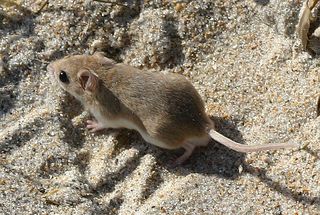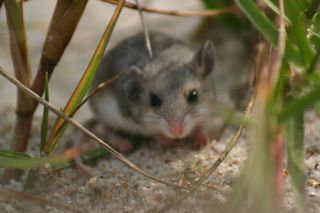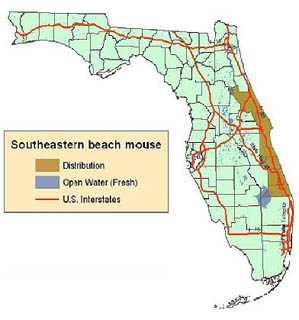Southeastern Beach Mouse: Difference between revisions
From Indian River Lagoon Project
mNo edit summary |
m (→Documents) |
||
| Line 44: | Line 44: | ||
<div class="irlcontentbottom noprint"> | <div class="irlcontentbottom noprint"> | ||
==Documents== | ==Documents== | ||
* [https://www.fnai.org/FieldGuide/pdf/Peromyscus_polionotus_niveiventris.pdf Peromyscus polionotus niveiventris | * [https://www.fnai.org/FieldGuide/pdf/Peromyscus_polionotus_niveiventris.pdf FNAI 2001 - Peromyscus polionotus niveiventris (PDF 2pp 55KB)] | ||
* [https://www.fws.gov/verobeach/msrppdfs/southeasternbeachmouse.pdf USFWS - Multi-Species Recovery Plan for South Florida - Southeastern Beach Mouse (PDF 20pp 194KB)] | |||
==Web Links== | ==Web Links== | ||
Revision as of 11:42, January 29, 2022
The Southeastern beach mouse (Peromyscus_polionotus_niveiventris) is an Oldfield mouse subspecies that is only found on Florida's Atlantic coast barrier island between Volusia and Martin counties.
Description
The Southeastern beach mouse has a light brown and grayish back side, light brown forehead, and white belly. Tails are white on top and gray on the bottom. Adult males average a length of 5.3 inches while females have an average length of 5.5 inches. Females have a 2.2 inch tail while males have a two inch tail.[1]



